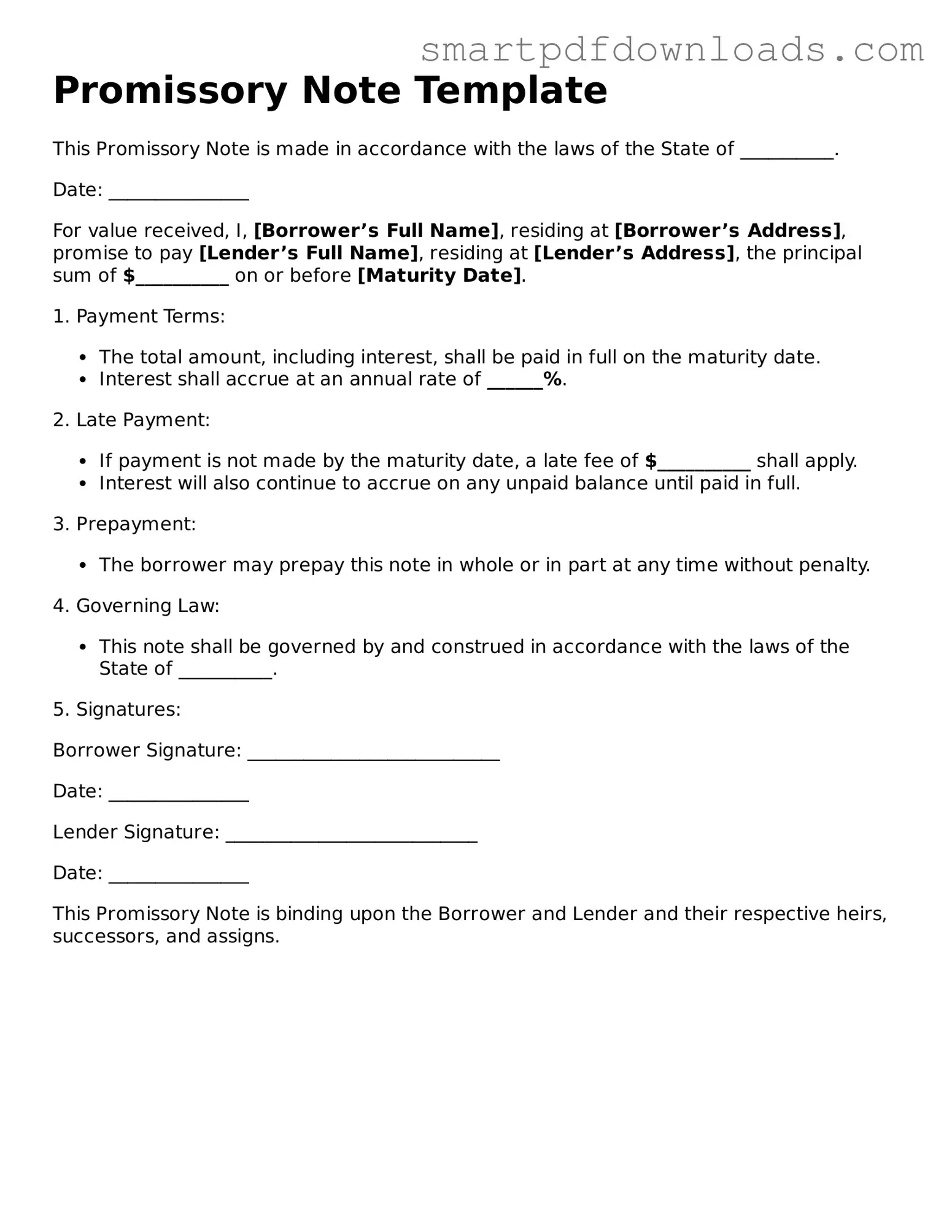Promissory Note Template
This Promissory Note is made in accordance with the laws of the State of __________.
Date: _______________
For value received, I, [Borrower’s Full Name], residing at [Borrower’s Address], promise to pay [Lender’s Full Name], residing at [Lender’s Address], the principal sum of $__________ on or before [Maturity Date].
1. Payment Terms:
- The total amount, including interest, shall be paid in full on the maturity date.
- Interest shall accrue at an annual rate of ______%.
2. Late Payment:
- If payment is not made by the maturity date, a late fee of $__________ shall apply.
- Interest will also continue to accrue on any unpaid balance until paid in full.
3. Prepayment:
- The borrower may prepay this note in whole or in part at any time without penalty.
4. Governing Law:
- This note shall be governed by and construed in accordance with the laws of the State of __________.
5. Signatures:
Borrower Signature: ___________________________
Date: _______________
Lender Signature: ___________________________
Date: _______________
This Promissory Note is binding upon the Borrower and Lender and their respective heirs, successors, and assigns.
